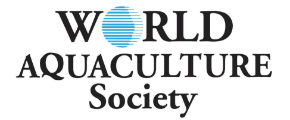THE 3C STRATEGY: ANTIBIOTIC FREE HEALTH MANAGEMENT PRACTICES FOR SHRIMP FARMING IN THAILAND
The "3C" health management program, making use of Clean seed, Clean water and Clean pond bottom, has been introduced in Thailand to help shrimp farmers to cope with an increasing number of important shrimp diseases i.e. WSSV, AHPND, EMS, WFS, EHP and ATM. These shrimp diseases are devastating and causing important economic losses to Thai shrimp farmers due to crop loss and/or increased production costs following low survival and growth retardation. Disease progression patterns vary. WSSV can whip out a complete farm in less than a week if the viral carriers/vectors such as crab are present in the farm system. On the other hand, AHPND/EMS and WFS/EHP exhibit medium to slow disease progression. Oral infection, cannibalism and cohabitation continue to be the most potential mode of infection for these diseases. The 3C strategy combined with completed Biosecurity system which comprised of a set of physical, chemical and biological precaution measures, aimes at a sustainable shrimp production without the use of antibiotic.
Clean seed is the first priority in 3C which requires a very strict implementation to avoid the losses caused by contaminated seed. Only post larvae will be stocked have to pass through the strict diseases screening, QC control and properly stress test. An extension of the nursery phase at the grow out farms for around one month before transfer to the grow out pond is recommended. Typical nurseries consist of round HDPE tanks of up to 150-200 m3 with an adequate aeration, water exchange, central drain and waste removal system.
Clean water aims at reducing water contamination by precipitating solids in suspension (TSS) and dissolved organic carbon (DOC)/dissolved organic nitrogen (DON) which function as nutrients for pathogenic bacteria causing AHPND and serve as substrate for fixation of EHP spores. Adequate pond design is important, including sufficient reservoir ponds to hold the treated water, ready to use (RTU) ponds to keep clean and treated water in quantities sufficient for the entire crop cycle (70/30 reservoir/culture pond being the ideal ratio).
Clean pond and bottom concept is focused on removing as much as possible the accumulated waste in the pond, including sludge, feces, uneaten feed, death shrimp, exoskeletons and died-off plankton etc. This is achieved by using a shrimp toilet with central drain and sludge pumping machine, installed with an effective aeration position to concentrate the suspended waste in the center of the pond. The sludge is regularly removed and kept in a closed system sludge pond prior to sludge treatment and discharge.
Making shrimp to be strong by avoiding stressful conditions by farming at optimal densities with stable water quality parameters throughout the crop cycle will help promote the shrimp's immune responses to combat diseases. Furthermore,promote shrimp health by suitable immunostimulant ,mineral and vitamin ,probiotic and functional feeds containing broad spectrum health promotors etc. will support the zero antibiotics regimen. The successful of the 3C and biosecurity concepts will depend on a good understanding of the practical implementation by shrimp farmers.










